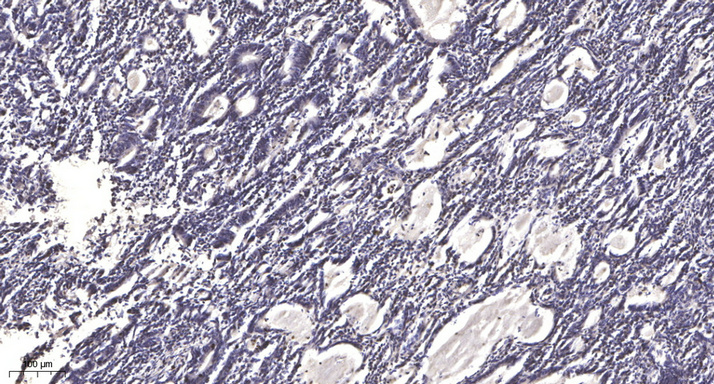Product Detail
Product NameMelanopsin Antibody
Host SpeciesRabbit
ClonalityPolyclonal
PurificationThe antibody was affinity-purified from rabbit antiserum by affinity-chromatography using epitope-specific immunogen.
ApplicationsWB;IHC
Species ReactivityHuman; Mouse; Rat
SpecificityThe antibody detects endogenous level of total Melanopsin protein.
Immunogen TypePeptide
Immunogen DescThe antiserum was produced against synthesized peptide derived from human OPN4. AA range:429-478
Target NameOPN4
ConjugateUnconjugated
Uniprot
Q9UHM6
Gene ID
94233
Calculated MW55kDa
Concentration1mg/ml
FormulationLiquid in PBS containing 50% glycerol, 0.5% BSA and 0.02% sodium azide.
StorageShipped at 4˚C. Store at -20˚C for one year. Avoid repeated freeze/thaw cycles.
Application Details
WB 1:500-2000; IHC 1:50-30
All lanes : Melanopsin Antibody at 1/1k dilutionLane 1 : COLO205 whole cell lysatesLane 2 : treated with blocking peptideLysates/proteins at 20 ug per lane.SecondaryAll lanes : Goat Anti-Rabbit IgG H&L (HRP) at 1/20000 dilution
Predicted band size: 53 kDa Observed band size: 55 kDaExposure time: 7 seconds
Formalin-fixed, paraffin-embedded human Gastric adenocarcinoma tissue stained for Melanopsin at 1/100 dilution in immunohistochemical analysis.
Opsins are members of the guanine nucleotide-binding protein (G protein)-coupled receptor superfamily. This gene encodes a photoreceptive opsin protein that is expressed within the ganglion and amacrine cell layers of the retina. In mouse, retinal ganglion cell axons expressing this gene projected to the suprachiasmatic nucleus and other brain nuclei involved in circadian photoentrainment. In mouse, this protein is coupled to a transient receptor potential (TRP) ion channel through a G protein signaling pathway and produces a physiologic light response via membrane depolarization and increased intracellular calcium. The protein functions as a sensory photopigment and may also have photoisomerase activity. Experiments with knockout mice indicate that this gene attenuates, but does not abolish, photoentrainment. Alternative splicing results in multiple transcript variants encoding different isoforms. [provided by Ref
If you have published an article using product 62211, please notify us so that we can cite your literature.




 Yes
Yes



